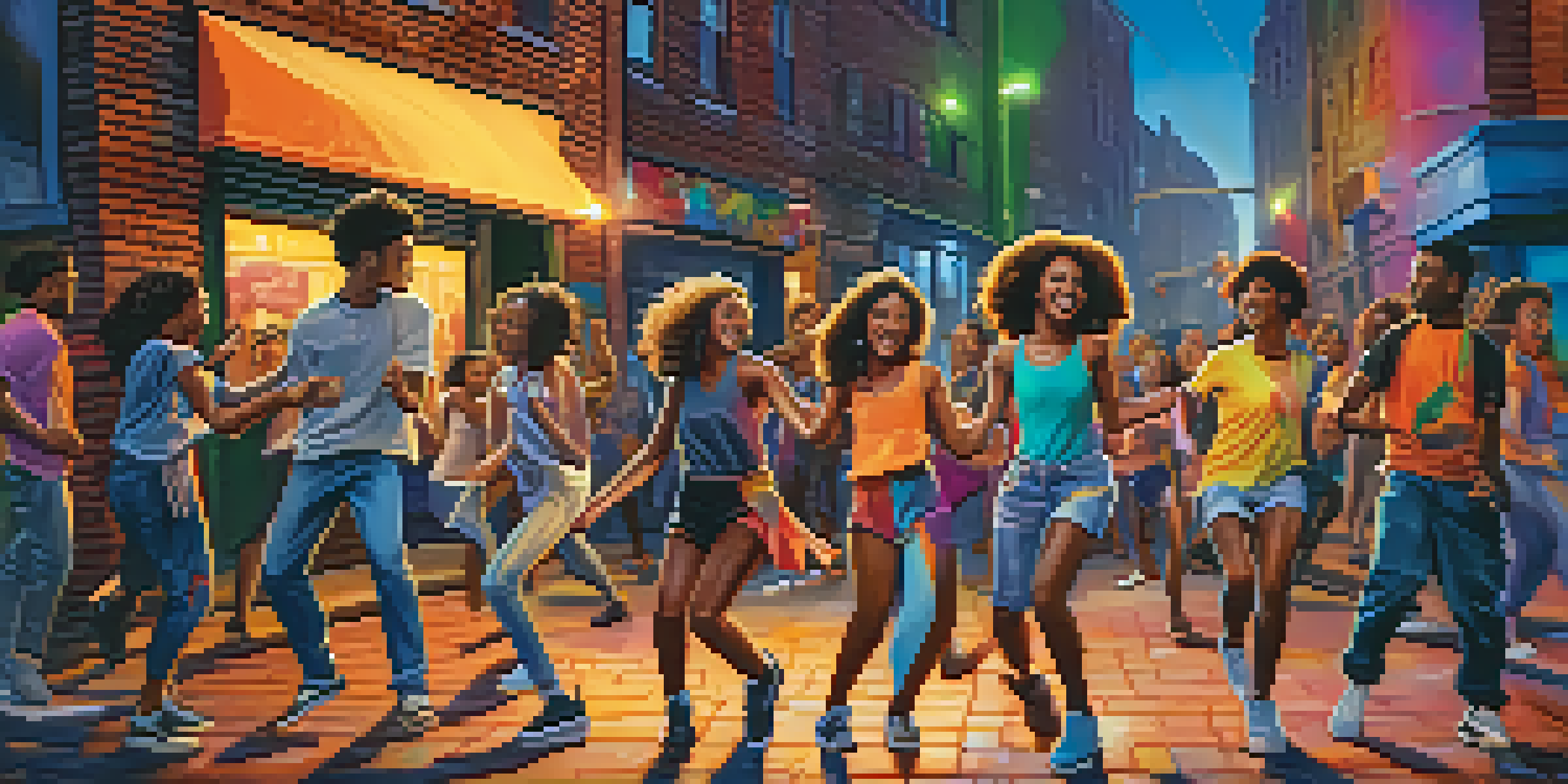The Role of Music Videos in Modern Music Marketing

The Evolution of Music Videos in the Digital Age
Music videos have come a long way since their inception in the 1980s. Initially, they served as a mere promotional tool for albums, but with the rise of platforms like YouTube, their role has drastically evolved. Today, music videos are not just visual representations of songs; they are integral to an artist's branding and storytelling.
Music videos are a way for artists to tell their story visually, and that is a powerful tool in engaging with their audience.
As artists release their music online, a well-produced music video can create a buzz that significantly impacts their reach. For instance, viral music videos can propel songs to the top of charts almost overnight, showcasing the power of visual storytelling in capturing audience attention. This shift emphasizes the importance of creativity and innovation in producing memorable content.
Furthermore, the digital age has democratized music video production, allowing indie artists to compete with major labels. With affordable technology and online platforms, anyone can create and share their music videos, leading to a rich diversity of styles and narratives that resonate with different audiences.
How Music Videos Enhance Audience Engagement
Music videos serve as a powerful tool for engaging audiences on multiple levels. They provide a visual narrative that complements the song's lyrics, allowing fans to connect more deeply with the music. For example, a poignant story in a video can evoke emotions that resonate with viewers, forging a stronger bond between the artist and their fans.

Moreover, fans often share their favorite music videos on social media, amplifying the artist's reach. When a video resonates, it can lead to discussions, memes, and even dance challenges, creating a community around the music. This organic interaction not only increases visibility but also enhances fan loyalty, as audiences feel part of the artist's journey.
Music Videos Shape Artist Branding
A cohesive visual style in music videos is essential for artists to establish a recognizable identity and connect with their audience.
Additionally, behind-the-scenes content and video teasers keep fans engaged even before a song's release. By offering insights into the creative process, artists can build anticipation and excitement, making fans feel invested in the music and the artist's vision.
The Role of Branding in Music Videos
Branding is a critical aspect of music videos that can make or break an artist's success. A cohesive visual style can help establish a recognizable identity, setting an artist apart in a crowded market. For instance, artists like Billie Eilish have cultivated distinct aesthetics that resonate with their audience, making their videos instantly identifiable.
In the digital age, a music video is no longer just a promotional tool; it's an essential part of an artist's identity and brand.
Moreover, brand partnerships can elevate music videos into marketing powerhouses. Collaborations with fashion brands or product placements can create a synergy that benefits both the artist and the brand. This not only enhances the video's production value but can also lead to lucrative sponsorships and collaborations in the future.
Ultimately, a strong brand presence in music videos helps to build a narrative that goes beyond the music itself. This narrative can reflect the artist's values and lifestyle, making them more relatable and appealing to their target audience.
Analytics: Measuring the Success of Music Videos
In the modern music landscape, data analytics play a crucial role in evaluating the success of music videos. Platforms like YouTube offer insights into views, watch time, and audience demographics, allowing artists and marketers to understand what works. This data empowers creators to refine their strategies for future releases.
By analyzing metrics, artists can gauge audience engagement and identify trends. For instance, if a particular type of video resonates well with viewers, they might choose to replicate that style in future projects. This data-driven approach helps artists stay relevant and aligned with their fans' preferences.
Social Media Boosts Video Engagement
Platforms like Instagram and TikTok amplify music video impact by fostering direct interaction and community among fans.
Additionally, understanding viewer behavior can inform marketing strategies, such as targeted ads or social media promotions. By leveraging analytics, artists can maximize their reach and ensure their music videos are seen by the right audience.
The Global Reach of Music Videos
One of the most remarkable aspects of music videos today is their ability to transcend geographical boundaries. With platforms like YouTube and TikTok, artists can share their work with a global audience instantly. This phenomenon allows diverse musical styles and cultures to gain exposure and recognition worldwide.
For example, K-pop has exploded in popularity beyond South Korea, largely due to its visually stunning music videos that captivate international audiences. The vibrant visuals, intricate choreography, and catchy tunes have created a global fanbase, illustrating how effective music videos can bridge cultural gaps.
This global reach also provides artists with opportunities for collaboration across borders, fostering a rich exchange of musical ideas and styles. As artists embrace this interconnected landscape, the potential for innovation and creativity in music videos continues to grow.
Social Media: Amplifying Music Video Impact
Social media has become a vital channel for promoting music videos, amplifying their impact beyond traditional media. Artists can create buzz through sneak peeks, countdowns, and interactive content that encourages fan participation. This strategy not only builds anticipation but also drives traffic to the video upon its release.
Platforms like Instagram and TikTok are particularly effective for music promotion, as they allow for short, engaging clips that can go viral. For example, a catchy hook from a music video can become the basis for a trending challenge, further increasing its visibility and engagement. This cycle of sharing and participating creates a powerful promotional engine.
Analytics Drive Video Strategy
Data analytics provide insights into audience engagement, helping artists refine their strategies and stay relevant in a competitive market.
Additionally, social media enables artists to connect directly with their audience, fostering a sense of community. Fans can comment, share, and discuss the video, creating an interactive experience that deepens their connection to the music and the artist.
The Future of Music Videos in Marketing
As technology continues to evolve, the future of music videos in marketing looks promising. Innovations like virtual reality (VR) and augmented reality (AR) are beginning to transform how audiences experience music. Imagine immersing yourself in a 360-degree music video where you can interact with the environment—this could redefine the viewer experience.
Moreover, the rise of short-form video platforms has prompted artists to adapt their creative approaches. Quick, engaging snippets that capture the essence of a song can be just as impactful as traditional music videos, catering to shorter attention spans and the fast-paced digital landscape.

Ultimately, the continuous evolution of music videos will require artists and marketers to stay agile and open to new ideas. As they explore innovative ways to connect with audiences, music videos will undoubtedly remain a cornerstone of modern music marketing strategies.